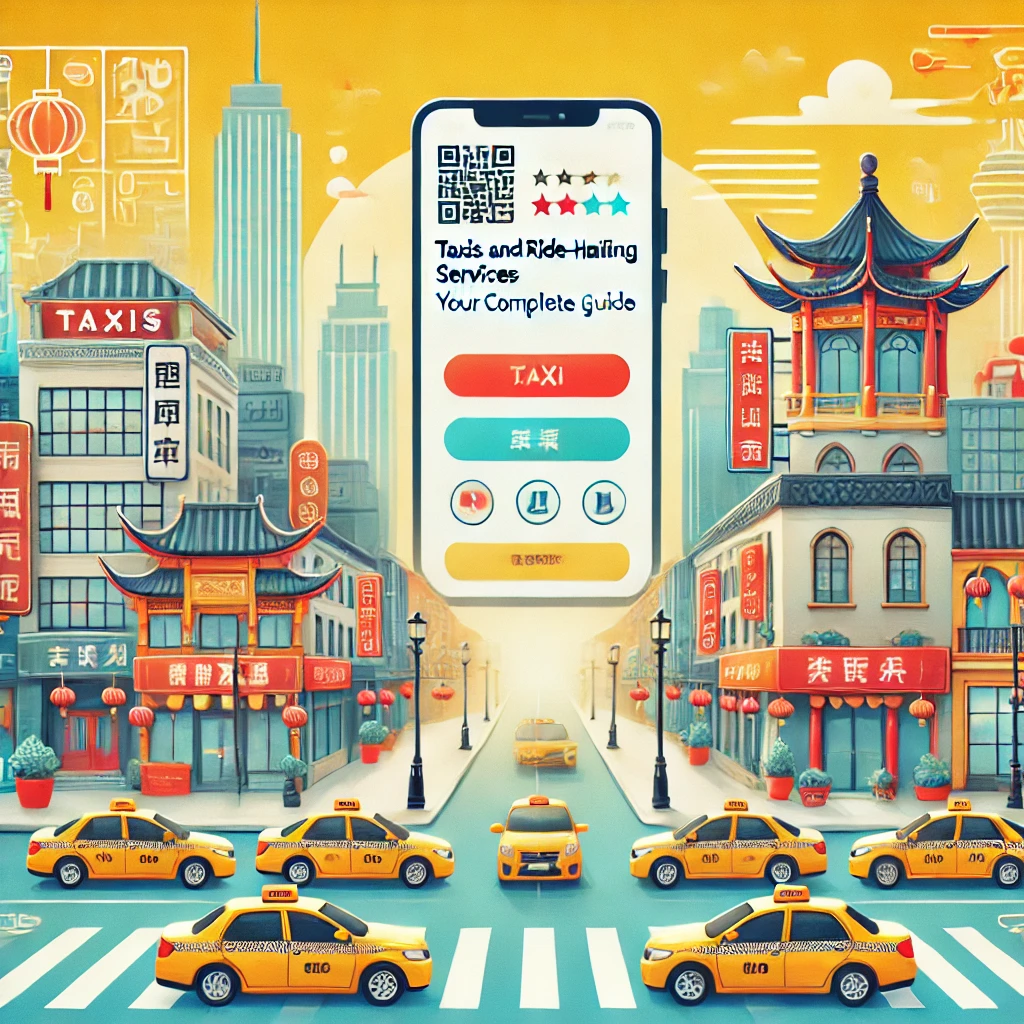
Navigating transportation options in China can be challenging, especially for first-time visitors. From traditional taxis to ride-hailing platforms, China offers a range of options that make getting around both convenient and affordable. Here’s an in-depth guide to help you understand how to use taxis, popular ride-hailing services, and even alternative transport options in major Chinese cities.
Table of Contents
What to Expect: An Overview of Taxis and Ride-Hailing in China
China’s transportation system is advanced, especially in cities like Beijing, Shanghai, and Guangzhou. Taxi and ride-hailing services are widely available, making it easy for tourists to get around. Although English is not widely spoken by drivers, mobile apps and translation tools can bridge the gap.
Using Traditional Taxis in China
Traditional taxis are a convenient choice in urban areas, but there are a few things you should know before hailing one.
Finding and Recognizing Taxis
In major cities, taxis are easy to spot. They are usually color-coded by city and display a “TAXI” sign on top. You can hail a taxi on the street, at taxi stands, or even at large hotels and shopping malls.
- Shanghai Taxis: Typically yellow, green, or blue.
- Beijing Taxis: Often painted in two tones, like red and yellow.
- Shenzhen and Guangzhou: Taxis are usually red or green.

Taxi Fares and Payment Options
Taxi fares in China vary by city, with larger cities like Beijing and Shanghai having higher base fares. Most taxis operate on a metered system, starting with a base rate and increasing based on distance.
- Average Base Fare: Typically around 10-14 RMB for the first 3 kilometers.
- Extra Charges: Additional fees may apply during rush hours, late at night, or in certain areas like airports.
Many taxis now accept mobile payments like Alipay and WeChat Pay, but carrying some cash is recommended, as not all drivers have mobile payment capabilities.
Ride-Hailing Platforms in China
For those who prefer a more personalized experience, China’s ride-hailing market is booming. With real-time location tracking and cashless payments, it’s no wonder why ride-hailing apps have become popular among both locals and visitors.
Didi Chuxing: The “Uber of China”
Didi Chuxing, often referred to as the “Uber of China,” is the country’s largest ride-hailing platform. The app offers a variety of ride options, from budget-friendly carpooling to premium services.
- Booking a Ride: Open the app, select your destination, and choose your ride option. Real-time tracking makes it easy to find your driver.
- Language Support: The app now has an English interface, though most drivers only speak Chinese. Preparing your destination in Chinese characters is advisable.
- Payment Options: Didi accepts both cash and mobile payments, making it easy for tourists to use.

Other Ride-Hailing Options
While Didi is the dominant player, other apps offer ride-sharing services, especially in tier-one cities.
- T3: Available in major cities with a reliable fleet and professional drivers.
- Caocao Mobility: Provides eco-friendly rides using electric vehicles, ideal for eco-conscious travelers.
Key Tips for Using Ride-Hailing in China
- Avoid Rush Hours: Try to avoid peak times, typically from 7-9 AM and 5-7 PM.
- Keep Contact Information Handy: Having your phone number linked to the app is essential for customer service.
- Language Assistance: Use translation apps if needed, as many drivers only speak Chinese.
Alternative Transportation Options
In addition to taxis and ride-hailing, China offers convenient and affordable alternatives for getting around, especially in urban areas.
Public Transportation
China’s public transportation system is highly efficient, particularly in larger cities where buses, subways, and trams cover most areas. Public transportation is often the most economical option for tourists.
- Subways: Available in most large cities. Beijing, Shanghai, and Guangzhou have extensive subway systems with English signs.
- Buses: Useful for reaching areas not serviced by the subway, though navigating the bus system can be tricky without some Chinese language knowledge.

Bike and E-Bike Sharing
Bike-sharing has become a staple in urban areas, with companies like Mobike and Ofo leading the way. Users can scan a QR code on the bike to unlock it and start riding, making it a great option for short distances.
- Cost: Usually between 1-2 RMB per half hour.
- Availability: Bikes are readily available in city centers and tourist areas.

Essential Tips for Tourists
Traveling around China requires a bit of planning, especially if you’re unfamiliar with the language. Here are some tips to make your journey smoother.
- Prepare Destinations in Chinese Characters: Showing addresses in Chinese can be helpful, especially with taxi drivers who may not understand English.
- Download Maps for Offline Use: Apps like Baidu Maps or Google Maps (with VPN) are essential for navigation.
- Stay Aware of Regional Differences: Transportation costs and availability can vary depending on the city or region you’re visiting.
Conclusion: Which Option is Best for You?
Whether you prefer the convenience of a traditional taxi, the flexibility of ride-hailing, or the affordability of public transportation, China has options to suit every traveler’s needs. Taxis and ride-hailing services are widely available in cities, while bike-sharing and public transportation can provide additional choices for short distances.
Ultimately, the best choice will depend on your destination, language comfort, and budget. With a bit of preparation, navigating China’s transportation system can become a memorable and hassle-free part of your travel experience.







